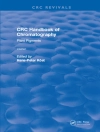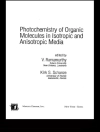The book explains the importance of chemistry in solving environmental issues by highlighting the role green chemistry plays in making the environment clean and green by covering a wide array of topics ranging from sustainable development, microwave chemical reaction, renewable feedstocks, microbial bioremediation, and other topics that, when implemented, will advance environmental improvement.
Green Chemistry for Environmental Remediation provides insight on how educators from around the world have incorporated green chemistry into their classrooms and how the principles of green chemistry can be integrated into the curriculum.
The volume presents high-quality research papers as well as in-depth review articles from eminent professors, scientists, chemists, and engineers both from educational institutions and from industry. It introduces a new emerging green face of multidimensional environmental chemistry. Each chapter brings forward the latest literature and research being done in the related area.
The 23 chapters are divided into 4 sections:
Green Chemistry for Environmental Remediation is an important resource for academic researchers, students, faculty, industrial chemists, chemical engineers, environmentalists, and anyone interested in environmental policy safeguarding the environment. Relevant industries include those in clean technology, renewable energy, biotechnology, pharmaceutical, and chemicals. Another goal of the book is to promote and generate awareness about the relationship of green chemistry with the environment amongst the younger generation who might wish to pursue a career in green chemistry.
Tabla de materias
List of Contributors xvii
Foreword xix
Part 1. Green Chemistry and Societal Sustainability 1
1. Environment and the Role of Green Chemistry 3
2. The Greening of the Chemical Industry: Past, Present and Challenges Ahead 35
3. Designing Sustainable Chemical Synthesis: The Influence of Chemistry on Process Design 79
4. Green Chemical Processing in the Teaching Laboratory: Microwave Extraction of Natural Products 107
5. Ensuring Sustainability through Microscale Chemistry 119
6. Capability Development and Technology Transfer Essential for Economic Transformation 137
Part 2. Green Lab Technologies 153
7. Ultrasound Cavitation as a Green Processing Technique in the Design and Manufacture of Pharmaceutical Nanoemulsions in Drug Delivery System 155
8. Microwave-Enhanced Methods for Biodiesel Production and Other Environmental Applications 209
9. Emergence of Base Catalysts for Synthesis of Biodiesel 251
10. Hydrothermal Technologies for the Production of Fuels and Chemicals from Biomass 291
11. Ionic Liquids in Green Chemistry Prediction of Ionic Liquids Toxicity Using Cell Models 343
12. Nano-catalyst: A Second Generation Tool for Green Chemistry 357
13. Green Polymer Synthesis: An Overview on Use of Microwave-Irradiation 379
Part 3. Green Bio-energy Sources 425
14. Bioenergy as a Green Technology Frontier 427
15. Biofuels as Suitable Replacement for Fossil Fuels 451
16. Biocatalysts-Greener Solutions 479
17. Lignocellulosics as a Renewable Feedstock for Chemical Industry. Chemical Hydrolysis and Pretreatment Processes 505
18. Lignocellulosics as a Renewable Feedstock for Chemical Industry Chemicals from Lignin 561
19. Genome Enabled Technologies in Green Chemistry 611
Part 4. Green Solutions for Remediation 627
20. Green Biotechnology for Municipal and Industrial Wastewater 629
21. Phytoremediation of Cadmium: A Green Approach 659
22. A Closer Look at “Green” Glass: Remediation with Organosilica Sol-Gels Through the Application of Green Chemistry 697
23. Modification and Applications of Guar Gum in the Field of Green Chemistry 727
Sobre el autor
Rashmi Sanghi received her Ph D from the University of Allahabad, India, in 1994. She is currently a consultant at the Indian Institute of Technology, Kanpur. Her major research interests are environmental green chemistry specializing in microbial and nanoparticle research. She has over 80 international journal publications, two patents, and two books on green chemistry to her credit.
Vandana Singh received her Ph D from the University of Allahabad, India, in 1986. She is currently an associate professor in the Department of Chemistry, University of Allahabad. Her research interests are in polysaccharides, polymers, and polymer composites. She has over 70 international journal publications as well as several book chapters to her credit.












